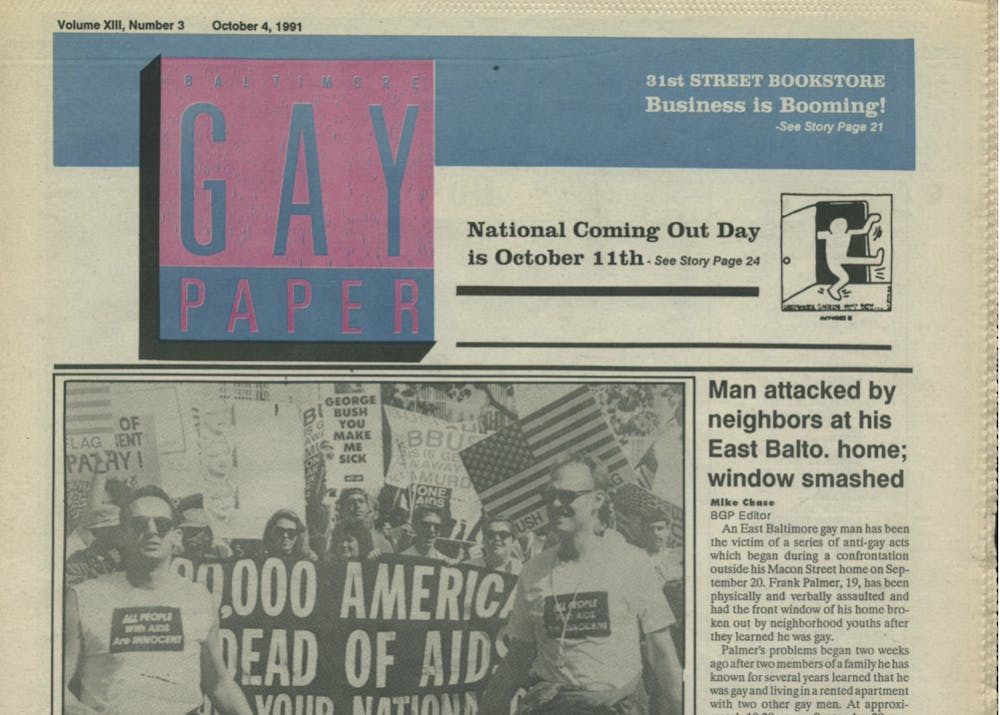The Diverse Sexuality and Gender Alliance (DSAGA) hosted an interactive event titled “Queer Times: A Virtual Exploration of Queer Media” on Oct. 24.
Joseph Plaster, director of the Winston Tabb Special Collections Research Center and curator in Public Humanities for the Sheridan Libraries, and graduate student Darius Irani, co-president of DSAGA, organized the event. They hoped to provide an opportunity for participants to interact with Baltimore’s archive of LGBTQ print and news media.
The event featured two speakers: Kate Drabinski, director of the Women Involved in Learning and Leadership program at University of Maryland, Baltimore County, and Aiden Faust, associate director of Special Collections and Archives at the University of Baltimore.
Four publications with significant ties to Baltimore’s queer history were presented, including excerpts from The Baltimore Afro-American, The Ladder, The Baltimore Gay Paper and Baltimore OUTLoud published between the 1930s and 2019.
Irani stated that he and Plaster made a conscious effort to ensure the chosen publications covered a wide range of experiences.
After the speakers recounted each publication’s history and origins, participants were given time to independently explore the materials, including a collection of articles published in The Baltimore Afro-American about the 1930s drag balls in Baltimore.
Plaster noted that readers today might find the language offensive.
“These articles were written by outsiders, ostensibly straight people, who often demeaned the queer people they saw at balls and, at the same time, were clearly titillated by them,” he said.
He further encouraged participants to read the archival materials against the interests of the original author or publication to open up new modes of understanding the lives of queer people from their own point of view.
“Because so much of the archive that’s available to queer historians is written by people who judged, policed and condemned them, reading against the grain is a really important methodology,” he said.
Participants also discussed how engaging with history and archives can be politically productive.
While archives are fragmentary and filled with gaps, Faust said, they are also ever-evolving.
“People think [archives are] dusty and frozen in time, but from a more explicitly activist point of view, it is a sort of active space that is constantly evolving, and the interpretations evolve too,“ he said.
Drabinski shared why she finds archival work exciting and empowering.
“One of the ways that oppression works is to take people’s history from them and to take a sense of ancestry or belonging away from them,” she said. “So for me, doing archival research and seeing places of gender and sexual non-normativity is really important and empowering and has given me a sense of how change happens.”
Demere Woolway, the director of LGBTQ Life, also was present at the event.
In an email to The News-Letter, Woolway explained why they believe events like “Queer Times” are important for connecting queer students to the history of LGBTQ organizing and activism.
“There are tremendous lessons in the ways that communities have gathered to care for each other, to support each other financially, and to have fun,” they wrote. “I hope that LGBTQ people see themselves as connected to that history and connected to the community, even when we are separated physically.”
Although many students are not physically in Baltimore this semester, Woolway listed ways that students could still learn about the community’s rich history from a distance.
“There are wonderful scholars who have found gender and sexuality outsiders in every section of human history. Read books, watch videos and find the LGBTQ sites that are a part of the history of your local neighborhood,” they wrote. “LGBTQ Life [also] has a lot of ways where people can connect.”
Sophomore Eleanor Franklin wrote in an email to The News-Letter that the event gave her a sense of community and togetherness.
“It was lots of fun to be able to gather with folks in an online space and discuss these archives that we all had a mutual interest in,” she said. “It provides a definite feeling of connection and support and creates a stronger sense of an actual queer community and queer space on campus.”





